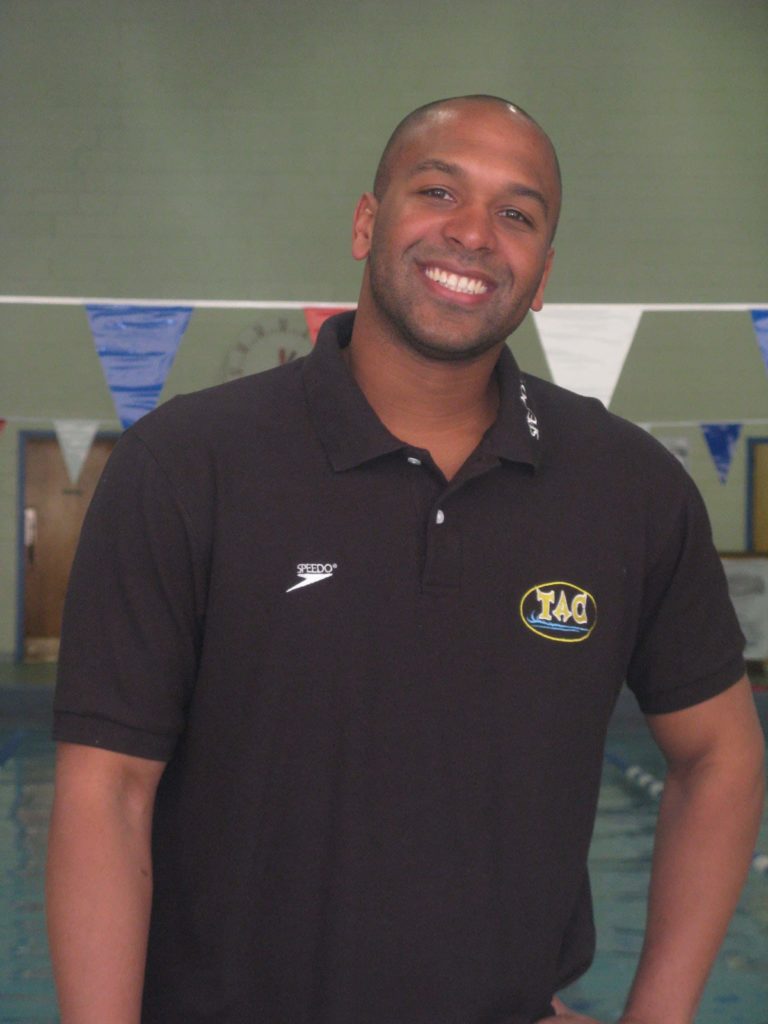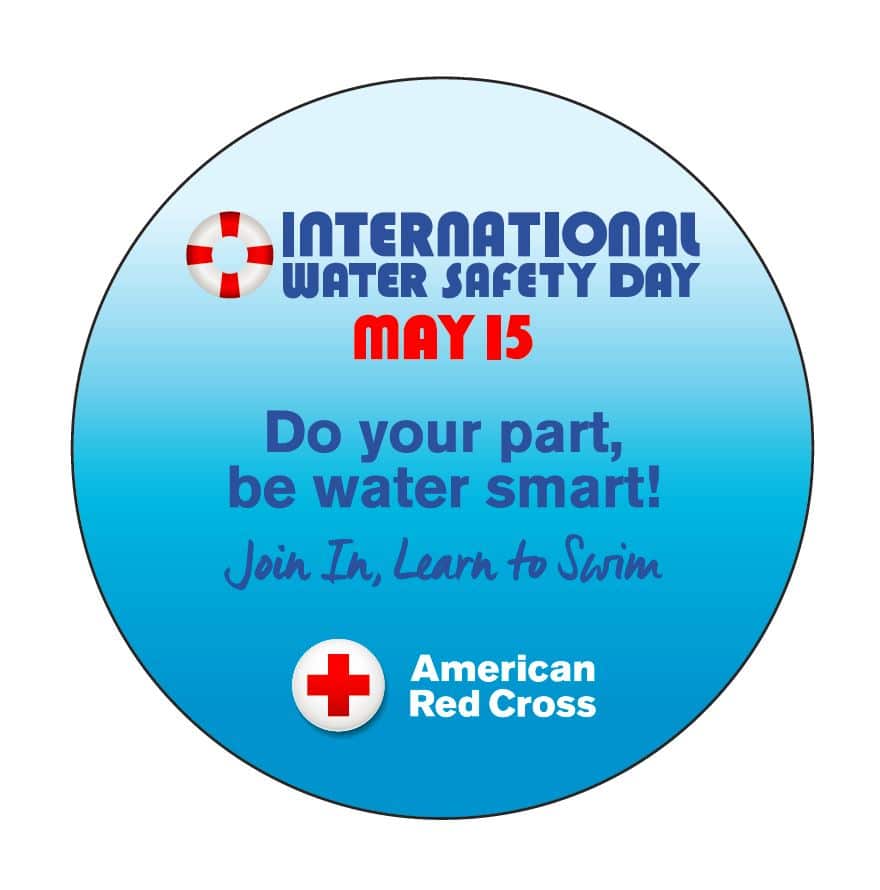
With Memorial Day weekend right around the corner, we’re excited for pools to open and beach trips to commence. As you might guess, we’re keen on making sure you and your family are safe in the water this summer. In honor of International Water Safety Day on May 15, we sat down with the event’s co-founder Shaun Anderson, who is also co-founder of our partner organization, Diversity in Aquatics. Shaun spoke with us about his longtime connection to the Red Cross, the inspiration for this event and how you can get involved:
 1. How did you first become involved with the American Red Cross? What does the organization mean to you?
1. How did you first become involved with the American Red Cross? What does the organization mean to you?
I started with an American Red Cross Lifeguarding Certification in high school and haven’t looked back, as I’m still an American Red Cross licensed training provider at Norfolk State University. To me, as to so many others the American Red Cross has such an important and historic legacy. With over 100 years of water safety education and now they are helping to raise awareness and reach over a million people with the message of water safety in just one day. Frankly I’m honored to be involved with them; what a strong organization that has helped so many both within and also outside of the aquatics realm. My hat’s off to them.
2. If you had one water safety message to tell every parent and caregiver, what would it be?
Drowning is a serious pandemic. Learn about water safety for you and your children and learn how to swim!
3. You created International Water Safety Day (IWSD) with Jayson Jackson in 2012. What was your inspiration/motivation?
Prior to 2012, we were helping out with different local events and programs including The Josh Project which was started by Ms. Wanda Butts who lost her son to drowning. Ms. Butts had a profound impact on both of us. We were also helping with events abroad for quite some time and realized that our impact needed to scale to the size of the actual problem.
While involved with all these different programs we also realized the lack of water safety education in school systems. With so many amazing people doing incredible work in the water safety realm, why not bring everyone together and really strive to raise awareness together? We saw it sort of like an Earth Day for water safety and drowning awareness. We felt that we had the connections, means and tools to do so, and with all that given we felt compelled to act.
4. This is a big effort – what moved you to try to tackle the issue of water safety and drowning prevention on such a large scale? What helped you think so big? Many people would try to do something in their community, but you two went global!
As far as going global, Jayson and I just began to feed off each other and not let the fear of going for it get in the way. Ultimately, we decided that if even just one person celebrated IWSD making one child safer, then it was a success. This helped keep things in perspective. We knew that we could both reach at least one person each, and in our minds that was the only metric that mattered.
Thankfully, our network of aquatic professionals via Diversity in Aquatics set a solid platform to quickly spread the word and grow the day.
5. What was your biggest challenge?
Our biggest challenge was explaining to people that you don’t need a pool or other body of water to teach a water safety lesson. I think this is counterintuitive for many people, but in teaching a water safety lesson on land the student is inherently safer in and around water than without the lesson. That’s a hard concept to grasp, but like many public health campaigns it all starts with awareness. Ultimately we want everyone to get swim lessons, it’s the awareness that feeds those lessons!
6. How has this movement evolved over the years?
It’s amazing to see the growth in participants year after year as well as many organizations making IWSD an annual event. Numerous schools and entities are celebrating for the 3rd, 4th, and even 5th year in a row.
One of the most satisfying parts for me are the many celebrations of IWSD that take place around the globe that we hear about after the fact. For example, in 2014, Disney Resort Shanghai delivered their “Disney Wild About Safety – Safety Smart in the Water” program to over 300 students at Yuanxi Primary School in Pudong. When I hear that a group, program, organization or individual held an event or spoke at a school it brings a smile to my face knowing that just one person hearing the message makes a difference and justifies our work in the formation of the day.
7. You started swimming when you were young. Why do you think it’s important for children to know about water safety and for them to learn how to swim?
It’s a cycle…something that Ms. Butts said after her son Josh drowned has always stuck with me. “I wasn’t aware. I didn’t know.” Which is why raising awareness is first and foremost. When a child hears this message every year and comes home with a water safety sticker on their shirt and message in their mind, then parents and caregivers know that this is an issue and hopefully make sure their child receives additional education and formal swim lessons. Furthermore, that child eventually becomes an adult already aware of the importance of water safety. As adults collectively bring attention to the fact that drowning is a serious issue it builds the awareness needed to facilitate an increase of everything from funding to legislation needed to help further curve the problem.
Finally, knowing how to swim can do even more than save lives. Swimming opens up many fun aquatic activities as well as numerous educational and job opportunities that aren’t available to non-swimmers.
8. How are people getting involved and what kind of activities are planned for International Water Safety Day this year?
Individuals and organizations are celebrating in all sorts of ways. Some are doing land-based lessons and morning announcements in schools, some doing events at lakes, pools and other bodies of water, others making announcements in public areas, hosting lessons, and some are simply using social media to spread the word about water safety.
The American Red Cross and Diversity in Aquatics created a free, open source Resources Guide to teach a 15 minute water safety lesson on May 15. The American Red Cross has also produced and distributed over 1 million International Water Safety Day stickers (print yours here!).
It’s important that people decide how they would like to celebrate and remember that no effort is too small. We are asking that people share with us their efforts via the website: www.internationalwatersafetyday.org/get-involved/
9. This is an event that doesn’t require a pool or body of water to participate in. What kind of groups would you like to see get involved for next year’s International Water Safety Day?
More of the traditional groups such as ministries of education, ministries of health, schools and school districts, recreation centers, pediatricians, child care centers, etc., but also interesting groups that we never imagined. For example, this year the Dallas/Fort Worth International Airport is handing out American Red Cross International Water Safety Day stickers to passengers traveling throughout the world. To know that a child will be boarding a plane with a water safety sticker on their shirt is a pretty cool thing!
